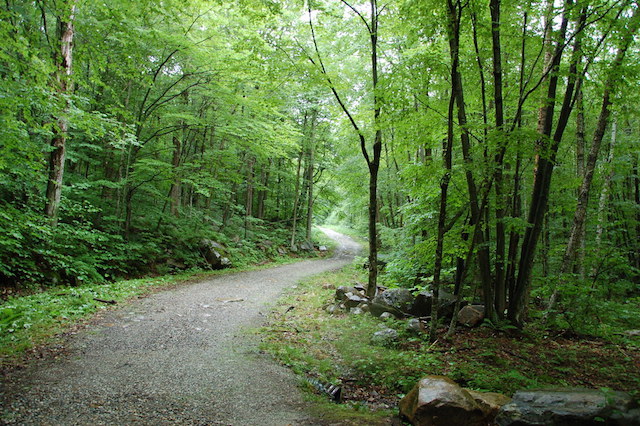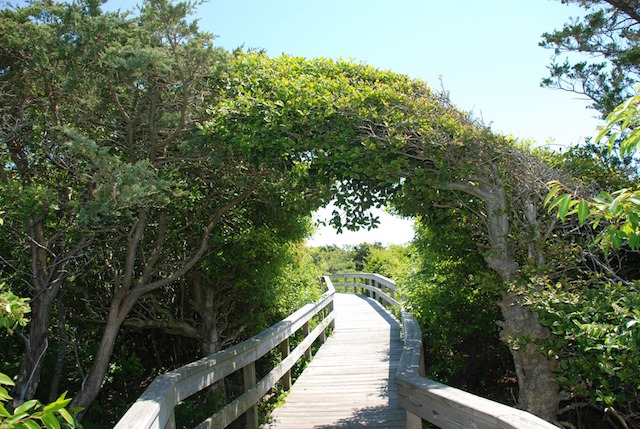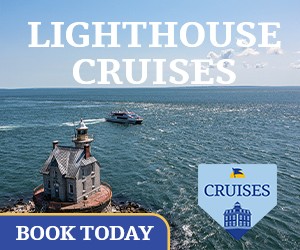When it comes to federally recognized outdoor spaces, National Parks get all the attention, and fairly so. But there are plenty of other nationally designated areas, filled with adventure, scenery, nature and wildlife, well worth a visit. And for Northeast residents, these destinations are far more accessible. After all, the Northeast has just one National Park but boasts three national forests and two national seashores.
While they may not garner the acclaim of a national park, these areas provide just as much to visitors: picturesque views, local wildlife, outdoor activities, historical sites and scenic drives. So pack your bags, fill up the tank and hit the road to explore the seas and trees of the Northeast.
Note: Due to the ever-changing nature of the COVID-19 crisis, please see official websites before visiting to check for restrictions or closures.
Fire Island National Seashore
Fire Island National Seashore is a 26-mile, protected area of Fire Island, a barrier island off the southern coast of Long Island. The park offers visitors a little bit of everything: beaches, hiking, history and wildlife viewing.
One of the area’s main attractions is the Fire Island Lighthouse. At 168 feet, the structure is the tallest lighthouse on Long Island. Guests can climb the 182 steps to the top to enjoy 360-degree views. On a clear day, you can even see the New York City skyline. The surrounding area features beaches and a nature trail for hiking.
Speaking of hiking, the park offers ranger-guided tours of Sunken Forest. This ecologically rare holly forest is one of the world’s last remaining occurrences of such an assemblage of plants. Another site unique to Fire Island is The Otis Pike Fire Island High Dune Wilderness, New York’s only federally designated wilderness area.
Amongst all this nature are 17 unique Fire Island communities filled with restaurants, stores and other attractions. One important thing to remember when planning your visit: You can drive to some parts of Fire Island but not through it, as most of the island does not have paved roads. The best way to get there is by ferry. Once on the island, guests have the option of traveling from spot to spot by foot, bike or water taxi.
Cape Cod National Seashore
Massachusetts’ Cape Cod National Seashore is 40 miles of pristine coastline, home to beaches, ponds, lighthouses, cultural sites, cranberry bogs and much more. For those looking to bask in the sun, several of the regions sandy oases, including Coast Guard Beach and Race Point Beach, are considered among the best in the country.
Those looking for more of an adventure can explore Cape Cod on foot by following one of the park’s seven hiking trails, or by bike on one of the three paved bicycle paths. Cape Cod is home to numerous lighthouses including Highland Light in North Truro and Nauset Light in Eastham. All the lighthouses are open to visitors seasonally from spring through fall.
As picturesque as the region is, Cape Cod is also a beacon of culture and history. Visitors can view public art works at the Highland Center, or travel back in time to sites such as the French Cable Station Museum and the Old Harbor Life-Saving Station.
White Mountain National Forest
The White Mountain National Forest is the easternmost such forest in the United States, stretching from western New Hampshire to eastern Maine. It’s home to dozens of 4,000-foot mountains, including Mount Washington, the highest peak in the Northeast. Visitors can also explore the forest’s 1,200 miles of hiking trails, 160 miles of the Appalachian Trail, 12,000 acres of wetlands, and more than 100 lakes and watersheds.
Not to be outdone, the White Mountain National Forest boasts six Congressionally designated Wilderness Areas spread out across 150,000 acres. Here, sharp-eyed visitors can spot moose, white tail deer and nearly 200 different species of birds.
Those looking for a scenic drive must make a cruise along the Kancamagus a priority. The National Scenic Byway traverses 34 miles through the forest and rises to an elevation of nearly 3,000 feet. Scenic vistas plotted along the highway provide unparalleled picturesque views of the surrounding mountains, rivers and other natural wonders.

Green Mountain National Forest
Vermont’s Green Mountain National Forest encompasses more than 400,000 acres of the southwestern corner of the state. It’s the largest contiguous piece of public land in Vermont and, along with New Hampshire’s White Mountain Forest, one of New England’s two nationally recognized forests.
The forest contains three notable hiking trails, including sections of the Appalachian and Long Trails, as well the Robert Frost Interpretive Trail. The latter commemorates the work of the famed poet, with many of his poems posted along the route. It’s an easy walk for guests of all ages and the first section is wheelchair accessible.
The location has a total of eight wilderness areas, home to turkeys, beavers, moose, deer and many other forms of wildlife. Those looking to witness a different form of eye-catching nature can visit Thundering Falls. Here, water cascades 140 feet down through a narrow cataract, making Thundering Falls one of Vermont’s largest waterfalls.
Finger Lakes National Forest
The 16,000-acre Finger Lake National Forest in New York is located on a ridge between the region’s two largest lakes, Seneca and Cayuga. The area offers just about everything an outdoor enthusiast could ask for: hiking, biking, fishing, camping and horseback riding.
The forest is home to a wide array of wildlife, including deer, beavers, bobcats, foxes, turkeys, as well as a host of grassland, shrubland and forest birds. Viewers can watch these animals at one of the countless ponds, gorges, ravines, woodlands or pastures found throughout the area.
If you’re hungry for a bite you can enjoy fresh blueberries, apples, raspberries and other fruit that are available for picking. The Finger Lakes is also one of the country’s foremost wine-producing regions and there are several wineries located on the outskirts of the national forest.
Need a ride as you tour the historic sites in the Northeast? AAA members can save up to 20% on Hertz rentals. And up to four additional drivers (who are AAA members) can drive for free, so everyone can take turns in the driver’s seat.
5 Thoughts on “Explore the National Seashores and Forests of the Northeast”
Leave A Comment
Comments are subject to moderation and may or may not be published at the editor’s discretion. Only comments that are relevant to the article and add value to the Your AAA community will be considered. Comments may be edited for clarity and length.

















Don’t forget Lowell National Historic Park in Massachusetts
My favorite is Sand Beach and the adjacent Thunder Hole in Maine’s Acadia National Park. The juxtaposition of †he sandy beach tucked between the high wooded cliffs is an unforgettable sight, and Thunder Hole is awesome if you can time your arrival in time to see the show.
There’s also the Whaling National Historic Park in New Bedford, MA.
An update: we now have a second national park! Weir Farm National Historical Park in Ridgefield/Wilton Connecticut. Only national park dedicated to the arts!
Two other beautiful places are:
1) The Parker River National Wildlife Refuge on Plum Island, Newbury, MA. This sanctuary is stunning, like no other place. It’s wonderful for birdwatchers and photographers especially, but is enjoyed by all who enjoy trails (boardwalks) to spectacular beaches or through marshes. There are about eight “gates” – places where you can park and access a trail. Some take you to the ocean, some to viewing towers, some through the marshes, etc.
2) The Rachel Carson National Wildlife Refuge, where visitors walk a boardwalk trail through a marsh where ocean water meets fresh water and informative postings explain the importance of this fragile ecosystem. Located in Kennebunk, ME. This is a wonderful place to take young children. The walk is about a mile long.